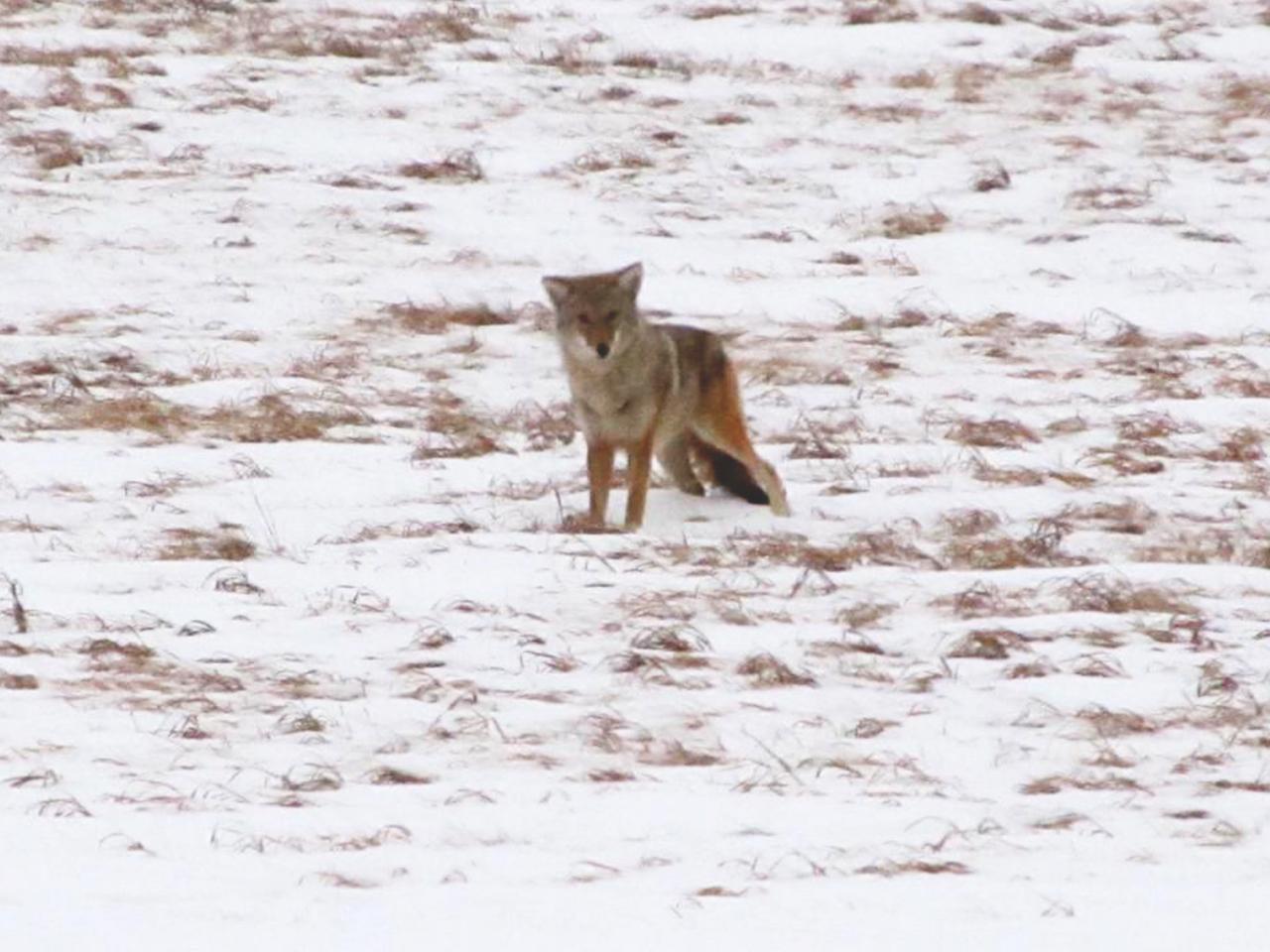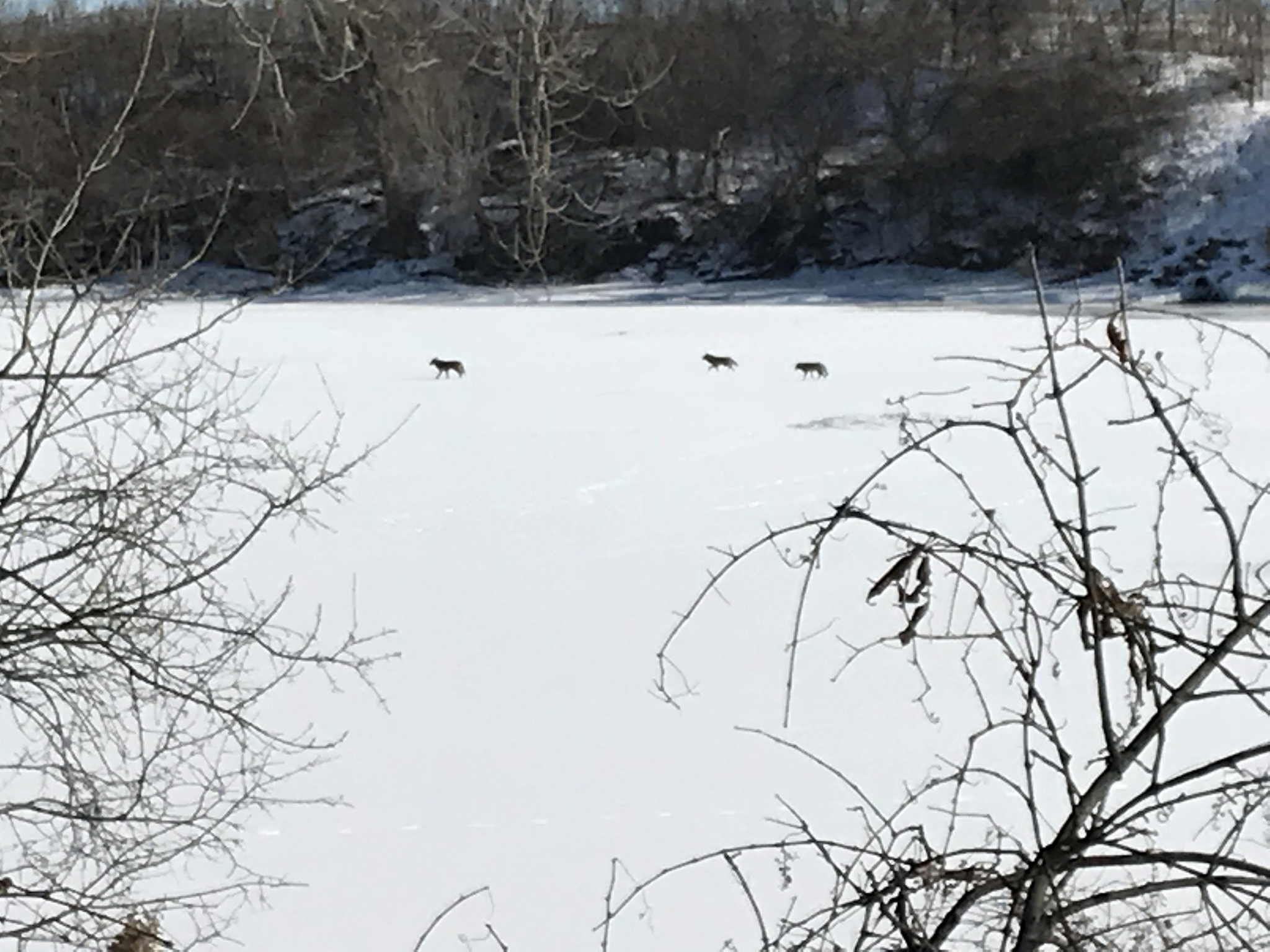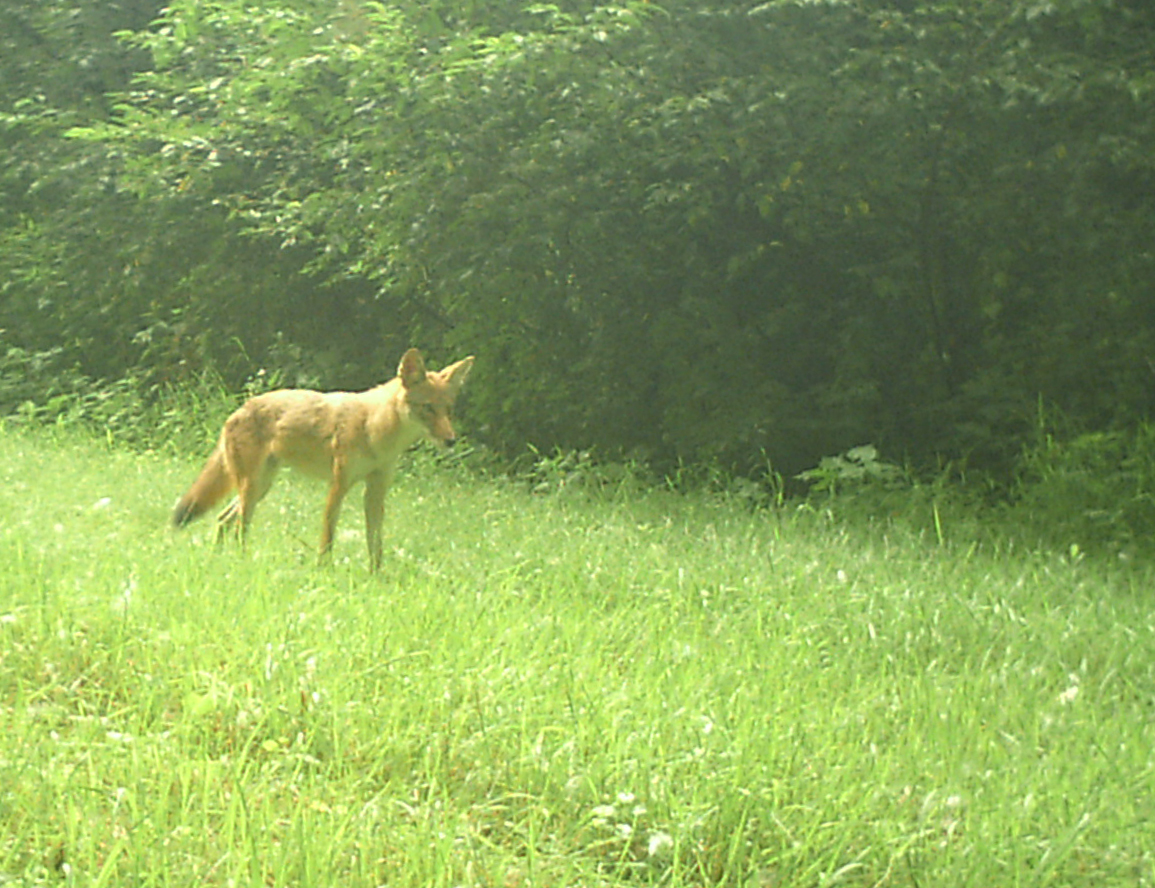Calling all cameras: Citizen science for the Twin Cities Coyote and Fox Research Project

Coyotes and foxes are mostly secretive animals, but sightings of these species are becoming more and more common throughout the Twin Cities metro area. Now, a group of researchers and partner organizations (including FMR) are setting out to better understand how these critters use the urban environment, and maybe dispel some myths along the way. You can help!
Our wild canine neighbors
You may have seen the recent Star Tribune article about the increasing number of coyotes in the metro area. You may have also been one of the thousands of people each year that see coyotes and foxes roaming urban and suburban neighborhoods.
Posts on local forums report their sightings, and there are even Facebook fan groups dedicated to these canine critters (the Highland Park Coyote Fan Page, for example). There’s a fair bit of mystique surrounding these animals, and plenty that even seasoned experts don’t know about them.
Luckily, a group of researchers from the University of Minnesota is setting out to find out more about urban coyotes and foxes. Dubbed the Twin Cities Coyote and Fox Research Project, it’s an engaging three-year study funded by the state’s Environment and Natural Resources Trust Fund.
 Three coyotes walk along the frozen Mississippi River in North Mississippi Regional Park in Minneapolis. Canine sightings are becoming more common in the Twin Cities. (Photo by Alicia Uzarek for FMR.)
Three coyotes walk along the frozen Mississippi River in North Mississippi Regional Park in Minneapolis. Canine sightings are becoming more common in the Twin Cities. (Photo by Alicia Uzarek for FMR.)
Introducing the Twin Cities Coyote and Fox Research Project
James Forester, Nick McCann and Meggan Craft, the project’s lead researchers, have some lofty goals: they hope the project will be able to map coyote and fox habitat use, assess their diets and measure disease prevalence in Twin Cities Metro Area populations.
Studying foxes and coyotes will help us understand how they use urban settings, provide helpful information to both habitat and wildlife managers and demystify these species for area residents. The researchers are partnering with groups like FMR and Three Rivers Park District to take advantage of the large amount of habitat owned or managed by these agencies.
FMR’s role in the project is relatively small, but we’re excited to be involved, as the knowledge gained could potentially influence our habitat management. Drawing on FMR’s large network of restoration sites, both urban and rural, we’ll be passing along info about fox and coyote sightings, known denning locations and facilitating researcher access to some of our private sites.
 A red fox captured on one of FMR's trail cameras at a restoration site in Dakota County. We'll contribute wildlife camera sighting info like this to the project.
A red fox captured on one of FMR's trail cameras at a restoration site in Dakota County. We'll contribute wildlife camera sighting info like this to the project.
How you can help
But the plans for this project also rely heavily on public participation. It’s difficult to locate foxes and coyotes when you’re starting from scratch and your search area is the entire seven county metro. That’s where you come in!
The project team has set up a page on the website iNaturalist. They’re hoping that people will log on and report sightings of these species as a way of crowdsourcing fox and coyote location information, drawing on the experiences of local residents.
The best part is that participation is easy. Here's how:
- First, create an iNaturalist account if you don't already have one
- Then upload your photo of the animal, its tracks or scat, to the project page
- Include info about when and where it was spotted
Not sure whether what you’ve seen is a red fox, gray fox or coyote? Not a problem — upload a photo anyway, and the researchers will verify its ID. Just make sure to include time and location.
 A coyote track we spotted as we worked on restoration at William H. Houlton Conservation Area. Tip for track photos: include a common object like a pencil to show the track's size.
A coyote track we spotted as we worked on restoration at William H. Houlton Conservation Area. Tip for track photos: include a common object like a pencil to show the track's size.
How your sightings will aid canine research in the Twin Cities
This fall, the researchers will use the repository of sightings to prioritize search areas. They’ll be radio-collaring a subset of animals in the fall in order to track their movements, learn about their diets and sample for disease.
This is a rare and important opportunity to be involved in research that will help us better understand these creatures and how they're adapting to urban areas. FMR is excited to help facilitate this project, and we hope that the project will provide some findings that improve our habitat management strategies for these species.
Ultimately, we hope that the results can also help the public better understand these important animals, so we can all learn to share our urban river habitat.
Learn more about conservation at FMR.
To make sure you find out about all our river wildlife and conservation news, sign up for our e-newsletter, Mississippi Messages, which we send two times per month. For each issue, our staff writes lively, informative articles on all things river-related: the latest news, legislative updates, wildlife spottings, and invitations to participate as a volunteer, advocate and more.